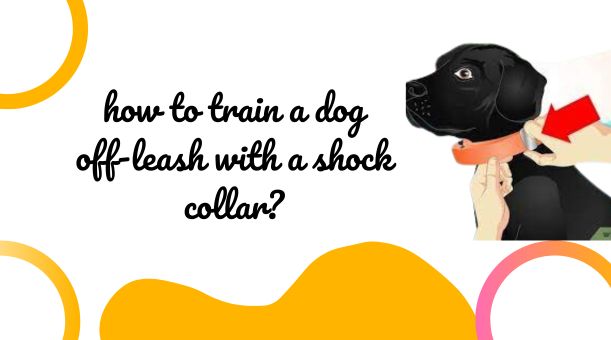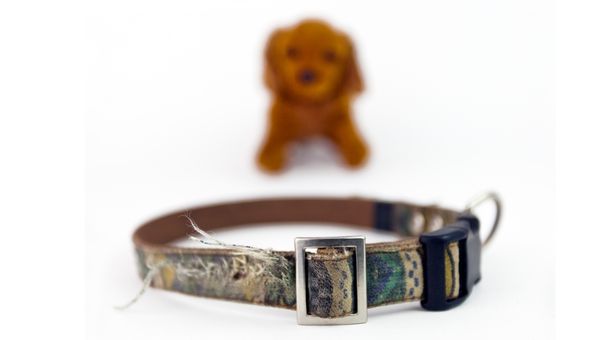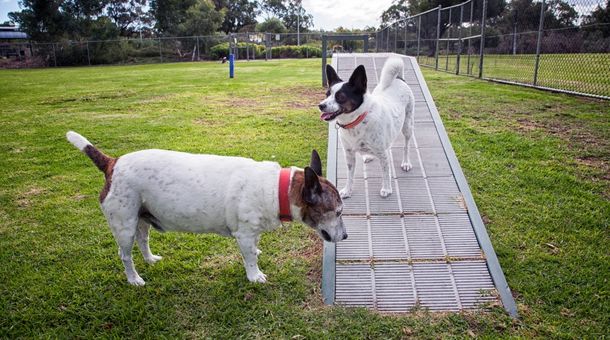If you’re considering off-leash dog training using a shock collar, it’s important to do your research and approach the process with caution.
While a shock collar can be an effective tool for training, it must be used properly to avoid harming your dog or causing unnecessary stress.
In this article, we’ll discuss the basics of off-leash dog training with a shock collar, including safety considerations, proper fitting and usage, positive reinforcement techniques, and potential risks.
By following these guidelines, you can ensure a safe and effective training experience for you and your furry companion.
how to train a dog off-leash with a shock collar?
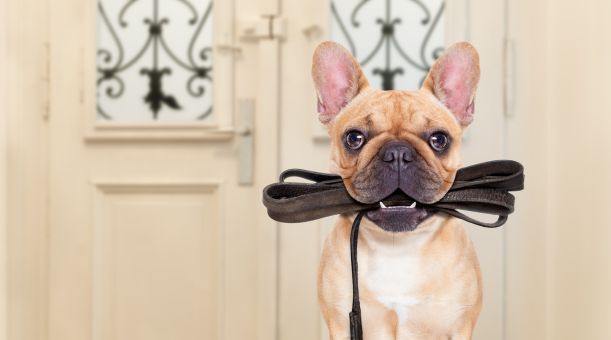
Training a dog off-leash with a shock collar requires careful planning and consistent, positive reinforcement techniques. Here are some general steps to follow:
Introduce the shock collar to your dog gradually, allowing them to get used to the sensation of wearing it. Use positive reinforcement techniques, such as giving treats or praise, to help your dog associate the collar with good behavior.
Teach your dog basic commands, such as “come” and “stay,” using positive reinforcement techniques. Reward your dog for responding to these commands, and gradually increase the distance between you and your dog.
Once your dog is responding reliably to basic commands, begin using the shock collar to reinforce these commands. Start with the lowest level of shock and gradually increase the intensity if needed. Use the collar only when necessary and always follow up with positive reinforcement.
Use the shock collar to discourage unwanted behavior, such as chasing after wildlife or running away from you. Again, start with the lowest level of shock and gradually increase it if needed. Use positive reinforcement to reward good behavior and to help your dog associate the shock with unwanted behavior.
Always be consistent in your training and never use the shock collar as a punishment. Make sure your dog understands what is expected of them and always follow up with positive reinforcement.
Finally, remember to be patient and take your time. Off-leash training with a shock collar is a process and requires time, effort, and dedication. With consistent training and positive reinforcement, you can help your dog become a well-behaved, off-leash companion.
How do I properly fit a shock collar for off-leash training?
Properly fitting a shock collar for off-leash training is crucial for your dog’s safety and comfort. Here are some steps to follow:
Choose a collar that fits your dog’s neck size and weight. Measure your dog’s neck and consult the manufacturer’s sizing guide to ensure a proper fit.
Adjust the collar so that it is snug but not too tight. You should be able to fit one or two fingers between the collar and your dog’s neck.
Ensure the collar’s contact points are in direct contact with your dog’s skin. If your dog has long hair, you may need to trim the fur around the contact points to ensure proper contact.
Test the collar to make sure it is working properly. Check the batteries and test the shock level on your skin before using them on your dog.
Allow your dog to wear the collar for short periods at first, gradually increasing the amount of time they wear it. Monitor your dog’s behavior and check for any signs of discomfort or irritation.
Finally, always follow the manufacturer’s instructions and never leave the collar on for extended periods. Remove the collar when your dog is not being trained and never use the collar as a punishment.
How often should I use the shock collar for off-leash training?

The frequency of using the shock collar for off-leash training will depend on your dog’s individual needs and behavior. It’s important to use the shock collar sparingly and only when necessary, as overuse can cause unnecessary stress and discomfort for your dog.
As a general rule, shock collars should only be used as a last resort when other training techniques have failed. Use the collar to reinforce positive behavior and discourage unwanted behavior, but always follow up with positive reinforcement to help your dog associate good behavior with rewards.
In addition, it’s important to take breaks from using the shock collar to allow your dog time to rest and recharge. Some experts recommend using the shock collar for no more than 12 hours daily and taking a break for at least one hour after every 2-3 hours of use.
Ultimately, it’s important to use the shock collar responsibly and in conjunction with positive reinforcement techniques. Consult with a professional dog trainer if you are unsure about how often to use the collar or how to integrate it into your training routine.
Is off-leash training with a shock collar safe for my dog?
Off-leash training with a shock collar can be safe for your dog if it is done properly and responsibly. However, it is important to keep in mind that a shock collar is not a one-size-fits-all solution and should only be used when other training methods have failed.
It is important to choose a high-quality shock collar and properly fit it to your dog to ensure its comfort and safety. Always start with the lowest shock level and gradually increase it if necessary, using positive reinforcement techniques to reward good behavior.
It’s also important to be aware of the potential risks associated with using a shock collar, such as causing fear or anxiety in your dog or causing physical injury if used improperly. Shock collars should never be used as a punishment or in a manner that causes unnecessary harm or distress to your dog.
Consult with a professional dog trainer or veterinarian to determine if off-leash training with a shock collar is appropriate for your dog and to get guidance on proper usage and safety considerations. With responsible use and proper training, a shock collar can be an effective tool for off-leash training and can help improve your dog’s behavior and overall quality of life.
What are the potential risks of using a shock collar for off-leash training?
While shock collars can be effective in off-leash training, there are potential risks associated with their use. Some of these risks include:
- Physical harm or injury to your dog, including burns, abrasions, and punctures.
- Psychological harm or distress to your dog, including fear, anxiety, and aggression.
- Negative associations with training or the trainer can lead to decreased trust and obedience.
- Misuse or overuse of the shock collar can cause harm and damage to your dog’s physical and psychological health.
- Interference with the natural bond and communication between you and your dog potentially leads to long-term behavioral issues.
- The potential for shock collar uses to escalate into more severe forms of punishment and abuse.
- The potential for shock collar to malfunction, causing harm or injury to your dog.
How can I ensure my dog’s safety during off-leash training with a shock collar?
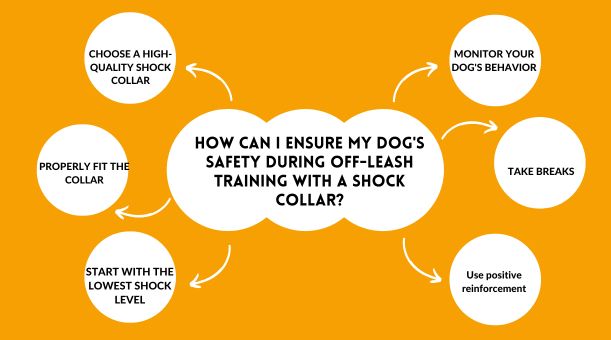
Ensuring your dog’s safety during off-leash training with a shock collar involves taking several steps to minimize risks and potential harm. Here are some tips to keep your dog safe:
Choose a high-quality shock collar
Choose a shock collar from a reputable brand that is designed to provide a safe and effective training experience. Read reviews and do research before purchasing a shock collar to ensure its quality.
Properly fit the collar
Make sure the collar fits properly and is not too tight or too loose. The collar should be snug but still allow room for your dog to breathe comfortably. The contact points should be in direct contact with your dog’s skin, but not so tight that they cause injury or discomfort.
Start with the lowest shock level
Begin training at the lowest shock level and gradually increase it if necessary. Start with a warning beep or vibration to get your dog’s attention before using the shock function.
Use positive reinforcement
Use positive reinforcement techniques to reward good behavior and avoid using the shock collar as punishment. Consistently reward good behavior with treats, toys, or verbal praise to help your dog associate good behavior with positive outcomes.
Take breaks
Avoid using the shock collar for extended periods, and take breaks throughout the day to allow your dog time to rest and recharge. Using the collar for no more than 12 hours per day and taking a break for at least one hour after every 2-3 hours of use is recommended.
Monitor your dog’s behavior
Pay close attention to your dog’s behavior during training and look for signs of fear, anxiety, or discomfort. If you notice any negative behavior, immediately stop using the shock collar and consult with a professional trainer or veterinarian.
Consult with a professional
Consult with a professional dog trainer or veterinarian before using a shock collar to ensure its safe and appropriate use for your dog’s individual needs and behavior.
Can off-leash training with a shock collar be effective without professional help?
While professional help can be beneficial when using a shock collar for off-leash training, it is possible to train your dog effectively on your own with proper research, preparation, and caution.
However, it’s important to note that using a shock collar without professional guidance can increase the risk of potential harm to your dog and may not be as effective as with professional help.
If you choose to train your dog with a shock collar on your own, it’s essential to thoroughly research the product and read the manufacturer’s instructions carefully. You should also take the time to learn about proper collar fitting, shock level settings, and positive reinforcement techniques to use in conjunction with the shock collar.
In addition, it’s important to closely monitor your dog’s behavior during training sessions and watch for any signs of discomfort, fear, or anxiety. If your dog appears distressed or is not responding well to the training, it’s important to stop and reassess the training plan.
However, it’s important to keep in mind that every dog is unique, and some may require more professional guidance than others.
If you’re uncertain or uncomfortable with using a shock collar on your own, it’s always best to consult with a professional dog trainer or veterinarian who can help guide you through the process safely and effectively.
Conclusion
Off-leash training with a shock collar can be a controversial topic among dog owners, with valid arguments on both sides. While it can be an effective tool for training your dog, it’s important to understand the potential risks and take necessary precautions to ensure your dog’s safety and well-being.
Proper use of a shock collar involves selecting a high-quality product, fitting it correctly, and using positive reinforcement techniques in conjunction with the shock function. It’s also important to closely monitor your dog’s behavior during training sessions and stop immediately if you notice any signs of discomfort, fear, or anxiety.
While professional help can be beneficial when using a shock collar, it’s possible to train your dog on your own with proper research, preparation, and caution. However, every dog is unique, and some may require more professional guidance than others.
how to train a dog off-leash with a shock collar? how to train a dog off-leash with a shock collar? how to train a dog off-leash with a shock collar? how to train a dog off-leash with a shock collar? how to train a dog off-leash with a shock collar? how to train a dog off-leash with a shock collar? how to train a dog off-leash with a shock collar? how to train a dog off-leash with a shock collar? how to train a dog off-leash with a shock collar?

